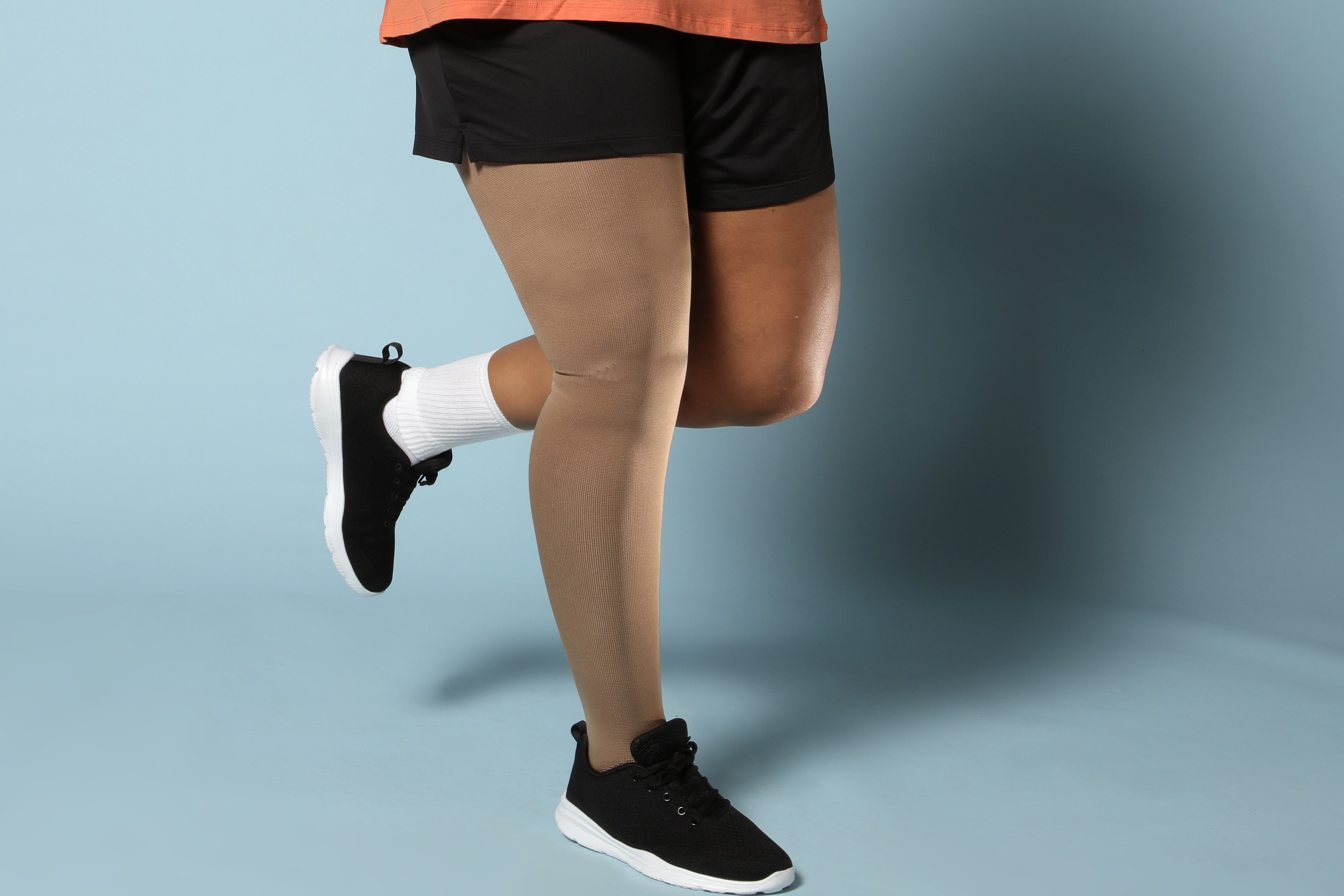Lymphology
There are currently 150,000 to 200,000 people in France with lymphedema. This swelling of the tissues of a part of the body due to poor lymph circulation harms the quality of life and can increase the risk of local infections. Wearing compression is a cornerstone of its treatment.

The lymphatic system is a network of channels and lymph nodes ensuring the circulation and filtration of lymph. This fluid drains immune cells, nutrients and metabolic waste from the body.
Lymphedema: why does it occur?
Lymphedema is a condition related to poor function of the lymphatic system, obstructing or slowing down the circulation of lymph. It can develop spontaneously following a constitutional defect or, more rarely, following a congenital disease: this is known as primary lymphoedema. It can also occur following cancer surgery or an infection, for example: in this case, it is secondary lymphoedema. The build-up of lymph in the subcutaneous tissues causes swelling of the part of the body affected by the malfunction. Lymphedema mainly affects the limbs (arms and legs), but can also affect other parts of the body, such as the neck or genitals.
Course and treatments
Lymphedema is a chronic disease, for which three different stages can be identified:
- Stage 1: the oedema is localised and can be reduced by elevating the limb affected;
- Stage 2: the oedema is widespread, permanently affecting the whole limb, and is accompanied by skin folds and changes;
- Stage 3: the limb is very swollen, not very mobile and presents infectious dermatological complications.
What are the solutions?
The objective of lymphedema treatment is to prevent a progressive increase in volume, restore mobility and prevent the development of infectious complications due to the failure of the immune system in the region affected. It involves applying bandages and manual lymphatic drainage (massage of areas affected by lymph stasis) by the physiotherapist, the wearing of compression garments, physical activity and skincare. Surgery is considered in rare cases when these measures have failed.
Documentary sources
HAS : La compression médicale dans le traitement du lymphoedème, 2010 International Lymphoedema Network : Best Practise for the management of lymphoedema, 2nd edition, Surgical Intervention : A position document on surgery for lymphoedema, 2012 Vignes S, Blanchard M, Yannoutsos A, Arrault M : Complications of Autologous Lymph-node Transplantation for Limb Lymphoedema. Eur J Vasc Endovasc Surg Jan 2013 Vignes S, Activités physiques et lymphœdèmes des membres. Sang Thrombose Vaisseaux 2011 ; 23, no 5 : 225-8

Lymphedema after breast cancer

Lymphedema of the lower limbs
